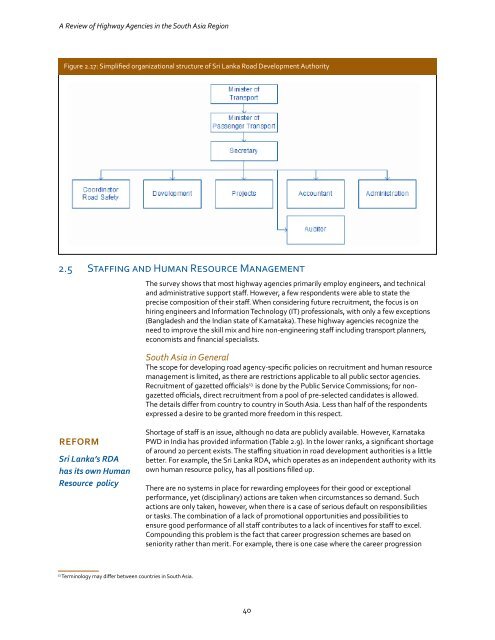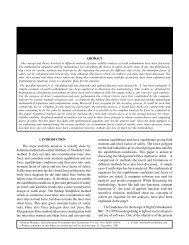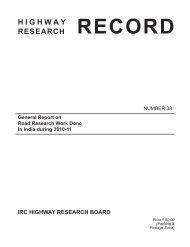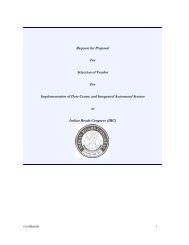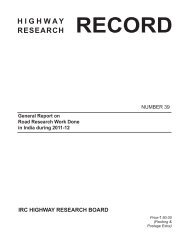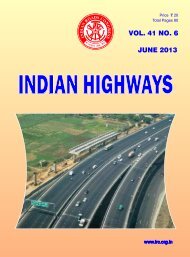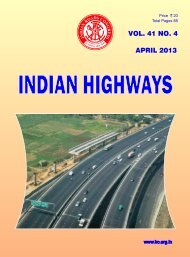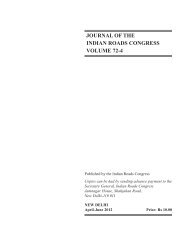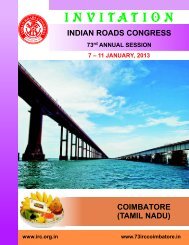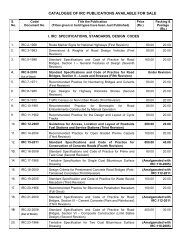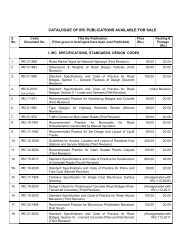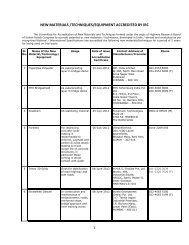A Review of Highway Agencies in the South Asia Region
A Review of Highway Agencies in the South Asia Region
A Review of Highway Agencies in the South Asia Region
Create successful ePaper yourself
Turn your PDF publications into a flip-book with our unique Google optimized e-Paper software.
A <strong>Review</strong> <strong>of</strong> <strong>Highway</strong> <strong>Agencies</strong> <strong>in</strong> <strong>the</strong> <strong>South</strong> <strong>Asia</strong> <strong>Region</strong><br />
Figure 2.17: Simplified organizational structure <strong>of</strong> Sri Lanka Road Development Authority<br />
2.5 Staff<strong>in</strong>g and Human Resource Management<br />
REFORM<br />
Sri Lanka’s RDA<br />
has its own Human<br />
Resource policy<br />
13 Term<strong>in</strong>ology may differ between countries <strong>in</strong> <strong>South</strong> <strong>Asia</strong>.<br />
The survey shows that most highway agencies primarily employ eng<strong>in</strong>eers, and technical<br />
and adm<strong>in</strong>istrative support staff. However, a few respondents were able to state <strong>the</strong><br />
precise composition <strong>of</strong> <strong>the</strong>ir staff. When consider<strong>in</strong>g future recruitment, <strong>the</strong> focus is on<br />
hir<strong>in</strong>g eng<strong>in</strong>eers and Information Technology (IT) pr<strong>of</strong>essionals, with only a few exceptions<br />
(Bangladesh and <strong>the</strong> Indian state <strong>of</strong> Karnataka). These highway agencies recognize <strong>the</strong><br />
need to improve <strong>the</strong> skill mix and hire non-eng<strong>in</strong>eer<strong>in</strong>g staff <strong>in</strong>clud<strong>in</strong>g transport planners,<br />
economists and f<strong>in</strong>ancial specialists.<br />
<strong>South</strong> <strong>Asia</strong> <strong>in</strong> General<br />
The scope for develop<strong>in</strong>g road agency-specific policies on recruitment and human resource<br />
management is limited, as <strong>the</strong>re are restrictions applicable to all public sector agencies.<br />
Recruitment <strong>of</strong> gazetted <strong>of</strong>ficials 13 is done by <strong>the</strong> Public Service Commissions; for nongazetted<br />
<strong>of</strong>ficials, direct recruitment from a pool <strong>of</strong> pre-selected candidates is allowed.<br />
The details differ from country to country <strong>in</strong> <strong>South</strong> <strong>Asia</strong>. Less than half <strong>of</strong> <strong>the</strong> respondents<br />
expressed a desire to be granted more freedom <strong>in</strong> this respect.<br />
Shortage <strong>of</strong> staff is an issue, although no data are publicly available. However, Karnataka<br />
PWD <strong>in</strong> India has provided <strong>in</strong>formation (Table 2.9). In <strong>the</strong> lower ranks, a significant shortage<br />
<strong>of</strong> around 20 percent exists. The staff<strong>in</strong>g situation <strong>in</strong> road development authorities is a little<br />
better. For example, <strong>the</strong> Sri Lanka RDA, which operates as an <strong>in</strong>dependent authority with its<br />
own human resource policy, has all positions filled up.<br />
There are no systems <strong>in</strong> place for reward<strong>in</strong>g employees for <strong>the</strong>ir good or exceptional<br />
performance, yet (discipl<strong>in</strong>ary) actions are taken when circumstances so demand. Such<br />
actions are only taken, however, when <strong>the</strong>re is a case <strong>of</strong> serious default on responsibilities<br />
or tasks. The comb<strong>in</strong>ation <strong>of</strong> a lack <strong>of</strong> promotional opportunities and possibilities to<br />
ensure good performance <strong>of</strong> all staff contributes to a lack <strong>of</strong> <strong>in</strong>centives for staff to excel.<br />
Compound<strong>in</strong>g this problem is <strong>the</strong> fact that career progression schemes are based on<br />
seniority ra<strong>the</strong>r than merit. For example, <strong>the</strong>re is one case where <strong>the</strong> career progression<br />
40


